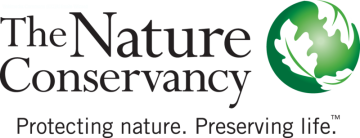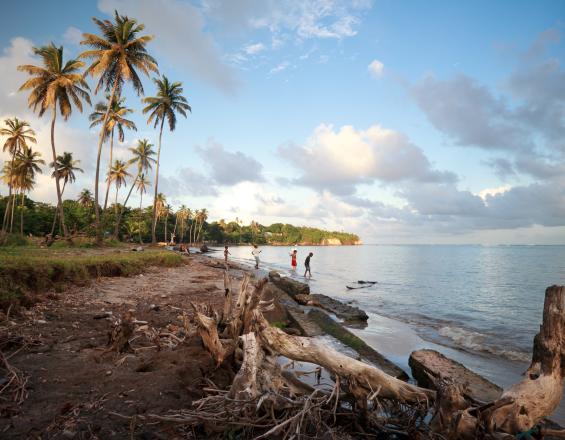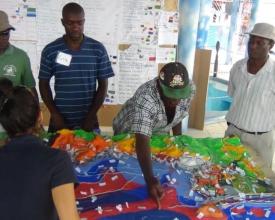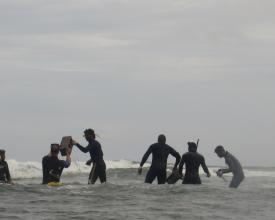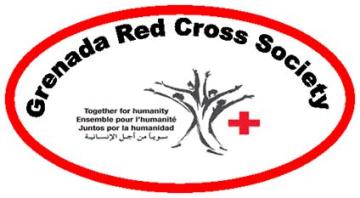Nealla Frederick - Gestora del proyecto "Al borde del agua": "Cuando era niña recuerdo ir a Grenville y hacer picnic con mi familia en la amplia playa de arena de la zona conocida localmente como Telescope. Durante generaciones, la playa de Telescope ha sido una zona de recreo clave para los residentes de la parte norte de Granada. Veinte años después, en 2013, fui el primer granadino contratado para trabajar con The Nature Conservancy, y mi primera misión importante fue trabajar en la adaptación basada en los ecosistemas costeros y en el proyecto piloto de The Nature Conservancy en la bahía de Grenville. Mi primera visita a Grenville me impactó. Mientras caminaba por la orilla en Telescope nada parecía igual. La playa donde había jugado de niño y toda la vegetación costera se habían perdido a manos del mar. Uno de los ancianos del pueblo me habló de su lucha contra el mar y de cómo su única solución era amontonar neumáticos, piedras, bloques y viejos bloques de motor a lo largo de la orilla. Ahora puedo decir sinceramente que en los dos últimos años las cosas están cambiando a mejor y sé que estamos marcando la diferencia. Trabajando juntos, los miembros de la comunidad, el gobierno y los científicos e ingenieros costeros de TNC están aplicando soluciones azules basadas en la ciencia y respaldadas por los conocimientos locales. En enero, se completó la instalación piloto de estructuras de mejora de arrecifes diseñadas para romper la energía de las olas y proporcionar hábitat. Las estructuras se construyeron, montaron e instalaron utilizando mano de obra y recursos locales. Los buceadores estuvieron todo el día colocando rocas en cestas de alambre y apilándolas como si fueran Legos gigantes. El trabajo en la zona de fuerte oleaje era difícil y peligroso, pero la tripulación, formada por pescadores submarinos locales, estaba acostumbrada a estas condiciones. Durante un breve descanso hablé con uno de ellos sobre sus sentimientos acerca del proyecto. Su respuesta hizo que todos mis meses de duro trabajo y frustraciones merecieran la pena. Me dijo que por primera vez en muchos años tenía esperanzas en el futuro de su comunidad. Podía ver que las estructuras ya rompían las olas tal y como estaban diseñadas, y que estaba satisfecho de que el proyecto se guiara por los conocimientos locales y utilizara mano de obra local. Ya había visto a los peces, los pulpos y las langostas subir a la estructura, y dijo que su comunidad estaba adoptando el proyecto como propio y que ahora se comprometían a ser mejores administradores de su entorno, sabiendo que cuidando de la naturaleza, la naturaleza cuidaría de ellos.
